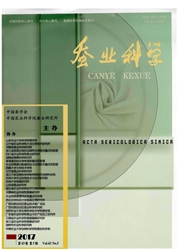

 中文摘要:
中文摘要:
抗氧化肽是蛹虫草的重要活性成分之一。以蚕蛹虫草子实体制备的纳米蛹虫草粉为基质,利用地衣芽孢杆菌(Bacillus licheniformis)E-30菌株进行液态发酵,在接种量为3%、碳氮比0.4、发酵基质质量浓度25 g/L的条件下,蛹虫草初级抗氧化肽的得率为6.4 g/L。体外试验检测该抗氧化肽在质量浓度为1 mg/m L时,对DPPH、·OH以及O-2的清除率分别为68.12%、79.40%和82.30%。辐射氧化损伤(60Co-γ照射总剂量8 Gy)模型小鼠按80 mg/(kg·d)的剂量灌胃蛹虫草抗氧化肽3 d后,小鼠血液中的白细胞、淋巴细胞含量均显著增加(P〈0.01);灌胃10 d后,小鼠血液中的白细胞、淋巴细胞含量趋于正常水平,超氧化物歧化酶活性上升,丙二醛含量降低。采用DEAE-52、Sephadex G-25对制备的蛹虫草抗氧化肽逐级纯化,得到的抗氧化肽单峰经质谱检测含有分子质量为2 237 D、3 372 D的2个组分,是富含芳香族氨基酸和碱性氨基酸的2个寡肽的混合物。研究结果提示,蛹虫草抗氧化肽对小鼠因辐射引起的血象变化及氧化损伤具有修复作用。
 英文摘要:
英文摘要:
Antioxidant peptides are one of the important active ingredients in Cordyceps militaris.The nanoparticles of Cordyceps militaris fruit bodies were used as base material for liquid fermentation by Bacillus licheniformis E-50.Under fermentation condition of 3%inoculum(volume fraction),0.4 carbon to nitrogen ratio,and 25 g/L mass concentration of base material,the yield of crude antioxidant peptides was 6.4 g/L.In vitro test revealed that the obtained antioxidant peptides at 1 mg/m L mass concentration exhibited good scavenging activities on DPPH(68.12%),HO·(79.40%)and O2-(82.30%).After model mice with irradiation-induced oxidative damage(60Co-γ,total dosage 8 Gy)were lavaged with 80 mg/(kg·d)of Cordyceps militaris antioxidant peptides for 3 d,the number of white blood cells and lymphocytes in mouse blood were significantly increased(P〈0. 01).After the high dosage Cordyceps militaris antioxidant peptides were fed for 10 d,the contents of white blood cells and lymphocytes in mouse blood recovered to normal levels,activity of superoxide dismutase(SOD)was increased,and malondialdehyde(MDA)content was reduced.Gradient purification of antioxidant peptides using DEAE-52 and Sephadex G-25 chromatography yielded a single peak which con-tained two components with molecular weight of 2 237 D and 3 372 D respectively as shown by mass spectrometry.They were the mixture of two oilgo-peptides rich in aromatic and basic amino acids.These results suggest that Cordyceps militaris antioxidant peptides could repair irra-diation-induced damage of blood and oxidation in mice.
 同期刊论文项目
同期刊论文项目
 同项目期刊论文
同项目期刊论文
 期刊信息
期刊信息
